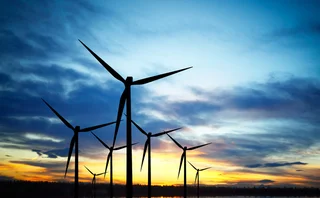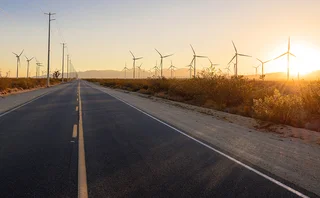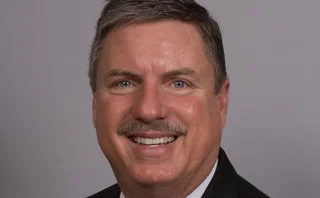
Energy dominates Union address
US President George Bush has set out bold plans for renewable energy in his annual State of the Union address, but experts question whether they are realistic.
Announcing his “Twenty in Ten” goal to curb greenhouse gas emissions and confront climate change, President Bush’s plan will see a 20 % reduction in US gasoline usage over the next 10 years.
To do so, the President pledged to raise automobile fuel economy standards and set a mandatory requirement of 35 billion gallons of renewable and alternative fuels in 2017, nearly five times the current 2012 target.
Prior to the address, fuel blenders were mandated to use 7.5 billion gallons of renewable fuels by 2012. To assist the increase, the President announced that the scope of the current Renewable Fuel Standard (RFS) is to be expanded into an Alternative Fuel Standard (AFS), embracing sources such as corn ethanol, cellulosic ethanol, biodiesel, methanol, butanol, hydrogen, and alternative fuels.
Analysts have questioned the realism of such goals, given the logistic difficulties inherent to distributing biofuels, the energy intensive nature of ethanol production from corn and the fact that the target set by President Bush “would require a doubling of the US corn acreage by 2017,” according to Barclays Capital research. Corn price rises resulting from dwindling supply and volatile energy prices may also affect new ethanol plant construction plans.
While the goal to cut gasoline consumption by 20% marks a significant shift in the White House’s environmental stance, the new energy policy fell short of embracing mandatory caps on carbon dioxide (CO2) or even mentioning the possibility of a post Kyoto accord after 2012. This is despite renewed calls by environmental groups and utilities for a mandatory federal emissions cap and trade scheme in the US.
The President also pledged to support Congressional action to authorize environmentally responsible oil and gas exploration in a small area of the Arctic National Wildlife Refuge in Alaska, which could produce as much as 1 million barrels of oil per day.
The new energy policy aims to double the size of US strategic oil reserves to 1.5bn barrels by 2027 to alleviate what the President regards as a dependency on foreign oil which leaves the US “vulnerable to hostile regimes and to terrorists – who could cause huge disruptions of oil shipments.”
U.S. Energy Secretary Samuel Bodman's announcement Tuesday that the government will begin buying crude this spring at a rate of about 100,000 barrels per day triggered a late-session rally Tuesday with WTI crude for March delivery rising 4.7% to close at $55.04 a barrel on the New York Mercantile Exchange (Nymex) in its first full day as the front-month contract.
Only users who have a paid subscription or are part of a corporate subscription are able to print or copy content.
To access these options, along with all other subscription benefits, please contact info@risk.net or view our subscription options here: http://subscriptions.risk.net/subscribe
You are currently unable to print this content. Please contact info@risk.net to find out more.
You are currently unable to copy this content. Please contact info@risk.net to find out more.
Copyright Infopro Digital Limited. All rights reserved.
As outlined in our terms and conditions, https://www.infopro-digital.com/terms-and-conditions/subscriptions/ (point 2.4), printing is limited to a single copy.
If you would like to purchase additional rights please email info@risk.net
Copyright Infopro Digital Limited. All rights reserved.
You may share this content using our article tools. As outlined in our terms and conditions, https://www.infopro-digital.com/terms-and-conditions/subscriptions/ (clause 2.4), an Authorised User may only make one copy of the materials for their own personal use. You must also comply with the restrictions in clause 2.5.
If you would like to purchase additional rights please email info@risk.net
More on Environment-Renewables
European Parliament vote on carbon market reforms seen as bullish
Energy traders welcome reforms seen as shoring up ailing EU carbon market
Modelling the financial risks of wind generation with Weibull
The manner in which wind generation can affect the half-hourly APX price is discussed
EU TSOs need carrot to tackle congestion – EEX's Reitz
Power grid operators and capacity mechanisms seen as impeding cross-border trade
Q&A: Ercot's Doggett on wind power surge and EPA rules
Outgoing president and CEO discusses challenges posed by renewables in Texas
EU power traders rail against national interventions
Capacity and renewables schemes deterring investment, say panel participants
Weather house of the year: Munich Re Trading
Weather derivatives specialist wins praise for consistent, high-quality service
Emissions house of the year: CF Partners
Specialist knowledge of carbon market is crucial to company's success
Asian emissions markets seen as step in right direction
China and South Korea emissions schemes show promise, say industry groups







